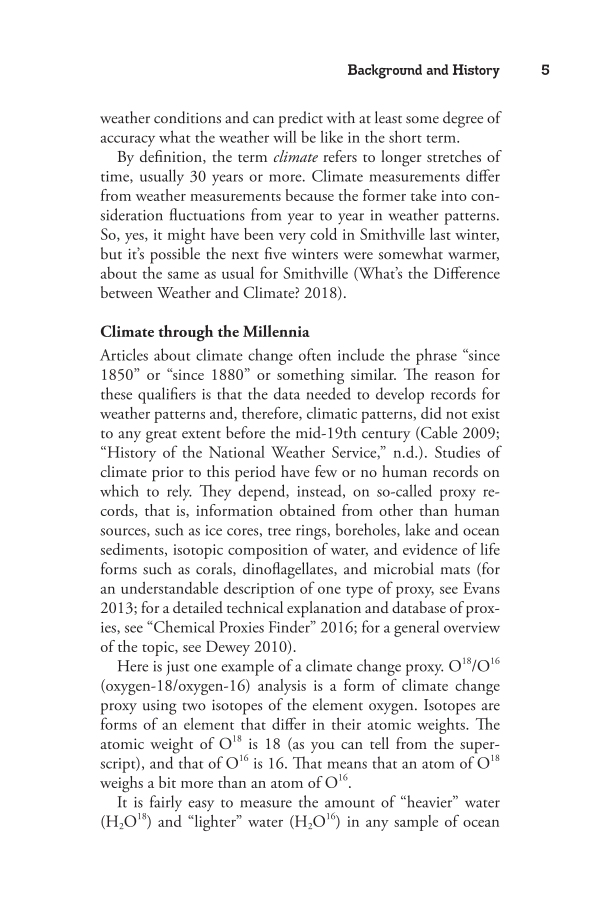Background and History 5 weather conditions and can predict with at least some degree of accuracy what the weather will be like in the short term. By definition, the term climate refers to longer stretches of time, usually 30 years or more. Climate measurements differ from weather measurements because the former take into con- sideration fluctuations from year to year in weather patterns. So, yes, it might have been very cold in Smithville last winter, but it’s possible the next five winters were somewhat warmer, about the same as usual for Smithville (What’s the Difference between Weather and Climate? 2018). Climate through the Millennia Articles about climate change often include the phrase “since 1850” or “since 1880” or something similar. The reason for these qualifiers is that the data needed to develop records for weather patterns and, therefore, climatic patterns, did not exist to any great extent before the mid-19th century (Cable 2009 “History of the National Weather Service,” n.d.). Studies of climate prior to this period have few or no human records on which to rely. They depend, instead, on so-called proxy re- cords, that is, information obtained from other than human sources, such as ice cores, tree rings, boreholes, lake and ocean sediments, isotopic composition of water, and evidence of life forms such as corals, dinoflagellates, and microbial mats (for an understandable description of one type of proxy, see Evans 2013 for a detailed technical explanation and database of prox- ies, see “Chemical Proxies Finder” 2016 for a general overview of the topic, see Dewey 2010). Here is just one example of a climate change proxy. O18/O16 (oxygen-18/oxygen-16) analysis is a form of climate change proxy using two isotopes of the element oxygen. Isotopes are forms of an element that differ in their atomic weights. The atomic weight of O18 is 18 (as you can tell from the super- script), and that of O16 is 16. That means that an atom of O18 weighs a bit more than an atom of O16. It is fairly easy to measure the amount of “heavier” water (H2O18) and “lighter” water (H2O16) in any sample of ocean
Document Details My Account Print multiple pages
Print
You have printed 0 times in the last 24 hours.
Your print count will reset on at .
You may print 0 more time(s) before then.
You may print a maximum of 0 pages at a time.









































































































































































































































































































































































